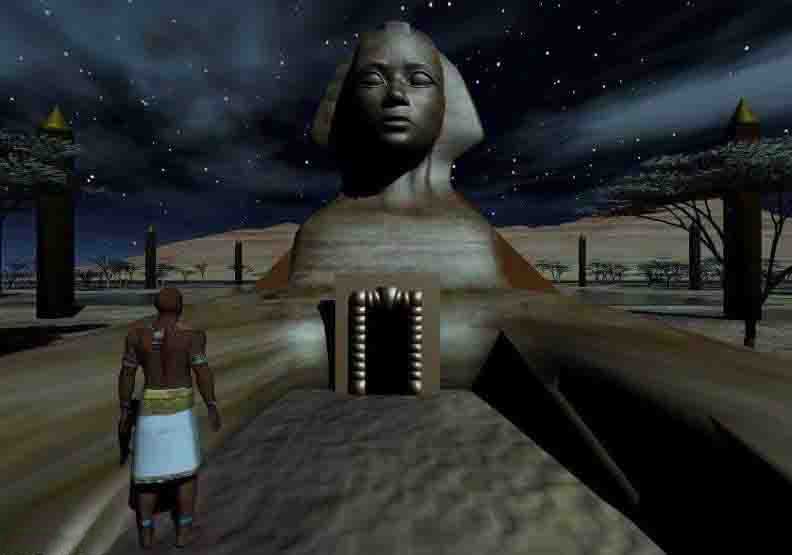
Sphinx - Schematics, Tunnels, and Chambers The Great Sphinx is one of the world's largest and oldest statues, yet basic facts about it such as the real-life model for the face, when it was built, and by whom, are debated.These questions have collectively earned the title "Riddle of the Sphinx", a nod to its Greek namesake, although this phrase should not be confused with the original Greek legend.The person behind the Great Sphinx has been a subject of debate. While there is no contemporaneous evidence indicating with certainty whom it represents, the Dream Stele erected by Pharaoh Thutmose IV in the New Kingdom associates the Sphinx with King Khafra (also known by the Hellenised version of his name, Chephren).
This would place its construction during the Fourth dynasty of Egypt (2723 BC2563 BC). Its super-colossal design is characteristic of Old Kingdom architecture, especially during Khafra's reign. Khafra is known to have ordered the building of twenty-two stone structures that were more than three times life-size, but the largest is believed to be the Great Sphinx.The Sphinx's link with Khafra therefore continues to be the most widely held view by Egyptologists, but other hypotheses exist.In 2004, French Egyptologist Vassil Dobrev announced the results of a 20-year reexamination of historical records and uncovering of new evidence that suggest the Great Sphinx may have been the work of the little known Pharaoh Djedefre, Khafra's half brother and a son of Khufu (Cheops), the builder of the Great Pyramid of Giza. Dobrev suggests it was built by Djedefre in the image of his father Khufu, identifying him with the sun god Ra in order to restore respect for their dynasty.In common with many famous constructions of remote antiquity, the Great Sphinx has over the years attracted speculative assertions by non-specialists, mystics, and general writers. The reasons for these alternative theories of the origin, purpose and history of the monument invoke a wide array of sources and associations, such as neighboring cultures, astrology, lost continents and civilizations (e.g. Atlantis), numerology, mythology and other esoteric subjects.
Egyptologists and the wider scientific community largely ignore such claims; however, on occasion they are drawn into public debate with these theorists, particularly when the claim purports to rely upon some novel or re-interpreted data from an academic field of study.Water Erosion-In recent years professor Robert M. Schoch of Boston University and Colin Reader have speculated that the Sphinx may display evidence of prolonged water erosion. Egypt's last time period where there was a significant amount of rainfall ended during the 3rd millennium BC. Shoch claims that the amount of water erosion they feel that the Sphinx has experienced indicates a construction date no later than the 6th millennium BC or 5th millennium BC, at least two thousand years before the widely accepted construction date and 1500 years prior to the accepted date for the beginning of Egyptian civilization. Reader's assessment is that the Sphinx is a few hundred years older than the traditionally accepted date.
This theory has not been accepted by mainstream Egyptologists or experts in related fields. Alternative theories for the erosion include wind and sand, acid rain, exfoliation or the poor quality of the limestone used to construct the Sphinx. John Anthony West- I met researcher and author John Anthony West in Egypt in December 2000.His theories about the age of the Sphinx are based on the weathering of the Sphinx's body dues to water erosion making it much older than is recorded. In a series of expeditions between 1991 and 1993 led by John Anthony West, scientific investigators conducted geological and seismic surveys around the Great Sphinx of Egypt along with other researchers. The team's conclusion: The pattern of erosion on the Sphinx indicates that it was carved at the end of the last Ice Age, when heavy rains fell on the eastern Sahara - perhaps more than 12,000 years ago. This contrasts starkly with the 'orthodox' Egyptological dating for the Sphinx of around 4,500 years ago.
Seismography: The seismic survery indicated the existence of several unexplored tunnels and cavities in the bedrock beneath the Sphinx, including a large rectangluar chamber at a depth of some 25 feet beneath the monument's front paws. This film linked the Sphinx to Atlantis and suggested that the chamber beneath the paws might contain the legendary 'Hall of Records' of Atlantis. Dr. Zahi Hawass does not agree stating that there is no scientific proof to these claims. "The Sphinx is the soul of Egypt.


